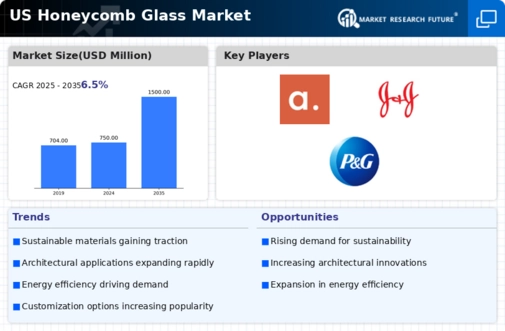The US Honeycomb Glass Market has seen significant growth and competitive dynamics in recent years, influenced by a myriad of factors, including advances in technology, varied applications, and evolving consumer preferences. This market comprises manufacturers, suppliers, and distributors who all play crucial roles in establishing a network that caters to various sectors such as architecture, automotive, and interior design. Companies are increasingly focusing on innovation, product diversification, and sustainability to stay relevant in this competitive landscape.
As demand for energy-efficient and aesthetically pleasing building materials rises, the Honeycomb Glass Market is positioned to experience further expansion, with companies striving to differentiate themselves through unique offerings and quality. Sefar AG has established a notable presence in the US Honeycomb Glass Market, characterized by its strong commitment to innovation and high-quality products. The company is renowned for its advanced weaving technology, which enables it to produce precision-engineered glass materials that meet the diverse needs of its clients.
With a robust focus on research and development, Sefar AG continuously enhances its product lines to align with the latest market trends and consumer demands. The company emphasizes sustainable practices, making it a preferred choice among environmentally conscious consumers. Sefar AG’s strengths lie in its ability to promptly adapt to market changes, ensuring that its offerings remain competitive and relevant within the US market landscape.
BDF Glass, operating within the US Honeycomb Glass Market, is recognized for its high-quality glass solutions designed for various applications, including residential and commercial projects. The company boasts a portfolio that includes a range of innovative glass products that integrate honeycomb structures, contributing to enhanced aesthetics and functionality. BDF Glass has made significant strides in expanding its market footprint, securing partnerships that enhance its distribution capabilities across the US.
The company’s strengths are augmented by its focus on quality control and customer satisfaction, which play a pivotal role in its operational strategy. Moreover, BDF Glass has been involved in strategic mergers and acquisitions, allowing it to broaden its product offerings and consolidate its position in the market, thereby catering to a wide array of customer needs while fostering continued growth in the competitive landscape of honeycomb glass solutions in the US.














Leave a Comment